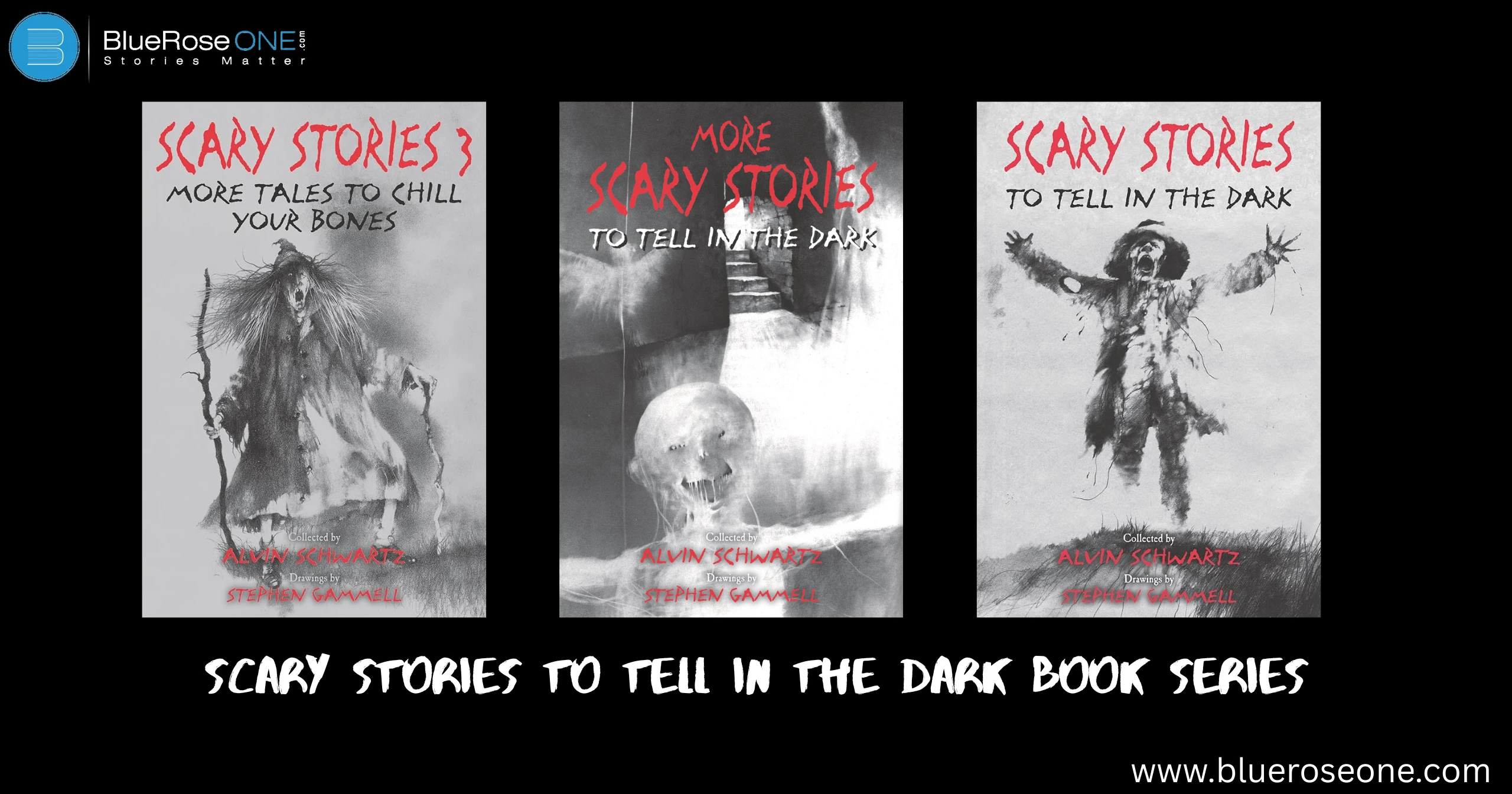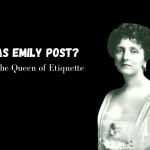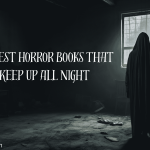If you grew up flipping through a creepy black-and-white book that gave you nightmares, chances are it was Scary Stories to Tell in the Dark. This iconic horror anthology series has chilled readers for decades and it’s not slowing down anytime soon.
Published between 1981 and 1991, the trilogy became a rite of passage for brave kids everywhere. It’s been banned, beloved, and adapted into a Hollywood film – a true cultural phenomenon in children’s literature.
Who Is the Series For?
The Scary Stories to Tell in the Dark series is primarily aimed at middle-grade readers, typically ages 8–12, who enjoy eerie tales and urban legends. However, its chilling illustrations and folkloric storytelling also appeal to teens and nostalgic adults. The series is perfect for readers who enjoy spooky campfire stories, mild horror, and spine-tingling suspense without graphic content.
Meet the Author and Illustrator
Alvin Schwartz – The Master of Creepy Folklore
Alvin Schwartz, known for his mastery of frightening folklore, created the Scary Stories to Tell in the Dark series by combining American urban legends, ghost stories, and oral traditions. Schwartz, a former journalist and folklorist, spent hours researching libraries and archives to preserve scary stories for younger generations. His partnership with illustrator Stephen Gammell resulted in an incredible terror experience.
Stephen Gammell – The Illustrator Who Haunts Your Dreams
Stephen Gammell, the illustrator behind Scary Stories to Tell in the Dark, is renowned for his surreal and nightmarish artwork that has haunted readers for decades. Born in 1943 in Iowa, Gammell is a self-taught artist whose signature black-and-white illustrations elevated Alvin Schwartz’s spooky folktales into unforgettable horror experiences.
His eerie, ink-splattered style uses distortion and shadow to tap into primal fears, making the books infamous among young readers. Gammell’s haunting images became so iconic that when the series was reissued with new illustrations in 2011, fans protested, prompting a return to Gammell’s original art in later editions.
Breakdown of the Trilogy
Book 1: Scary Stories to Tell in the Dark (1981)
The first book in the trilogy, Scary Stories to Tell in the Dark (1981), features a chilling collection of urban legends and folktales retold by Alvin Schwartz. Complemented by Stephen Gammell’s haunting illustrations, the stories tap into childhood fears and eerie folklore, making it a staple of horror literature for young readers. With tales like “The Big Toe” and “The Thing,” the book became both beloved and controversial for its graphic imagery and dark themes.
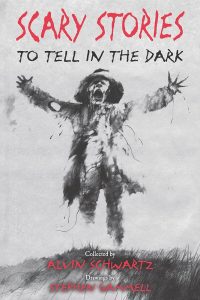
Scary Stories to Tell in the Dark
Book 2: More Scary Stories to Tell in the Dark (1984)
The second installment in the trilogy, More Scary Stories to Tell in the Dark, continues Alvin Schwartz’s tradition of retelling chilling folklore and urban legends. Illustrated hauntingly by Stephen Gammell, this 1984 release features tales like “The Drum” and “The Window,” which blend psychological horror with supernatural elements. The stories are darker and more intense than the first book, making it a favorite among fans seeking more spine-tingling narratives in the series.
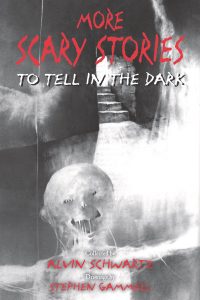
More Scary Stories to Tell in the Dark
Book 3: Scary Stories 3: More Tales to Chill Your Bones (1991)
The final installment in the trilogy, Scary Stories 3: More Tales to Chill Your Bones, delivers some of the series’ most haunting tales. With stories like “Harold” and “The Red Spot,” this volume pushes the limits of children’s horror, combining eerie folklore with vivid, grotesque illustrations by Stephen Gammell. Alvin Schwartz’s skillful storytelling continues to blend urban legends and traditional ghost tales, offering chilling narratives that have captivated and unsettled young readers for decades.
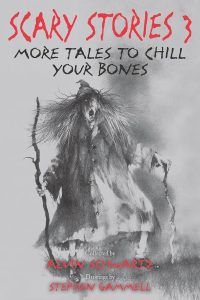
Why the Illustrations Are So Terrifying
Gammell’s Nightmarish Techniques
With chaotic lines, murky textures, and horrifying faces, Gammell created visuals that feel like nightmares ripped from your subconscious.
Gammell’s nightmarish techniques play a crucial role in making the Scary Stories to Tell in the Dark illustrations so haunting. Using shadow-heavy, scratchy lines and distorted, grotesque figures, artist Stephen Gammell evokes a sense of unease and fear that lingers long after viewing.
His abstract, almost surreal style taps into subconscious fears, blending the familiar with the monstrous. This unsettling ambiguity intensifies the horror, making the images unforgettable and deeply disturbing.
The Psychology of Fear in Children’s Illustrations
The psychology of fear in children’s illustrations relies on tapping into primal anxieties through visual cues. In Scary Stories to Tell in the Dark, the haunting artwork uses exaggerated features, stark contrasts, and unsettling textures to trigger a child’s natural fear response.
These images activate the amygdala the brain’s fear center by depicting distorted faces and ambiguous shadows, creating a sense of unease and mystery. This psychological impact makes the illustrations deeply memorable and genuinely frightening for young readers.
Controversy and Censorship
Why the Books Were Challenged and Banned
The Scary Stories to Tell in the Dark series faced challenges and bans due to its graphic illustrations and frightening content, which many parents and educators deemed inappropriate for children. Critics argued that the stories promoted fear, nightmares, and even rebellious behavior.
Additionally, some schools and libraries removed the books fearing they might traumatize young readers or clash with community values. This controversy highlights ongoing debates about censorship, age-appropriate material, and freedom of expression in children’s literature.
Defending the Value of Horror for Young Readers
Defending the significance of horror to young readers is critical in the face of increasing controversy and repression. Horror stories, such as Scary Stories to Tell in the Dark, provide youngsters with a secure space to address their anxieties and develop emotional resilience.
According to research, witnessing terrifying themes in controlled environments might improve problem-solving skills and empathy. Furthermore, horror fosters imagination and critical thinking, allowing young readers to face real-world fears with greater confidence.
Tips for Parents and Educators
Age Appropriateness
When selecting books from the Scary Stories to Tell in the Dark series, age appropriateness is crucial. These stories often contain spooky themes and vivid imagery that can be too intense for younger children. Experts recommend that the series is best suited for middle schoolers and older (ages 10 and up), as younger kids may experience fear or nightmares.
Parents and educators should consider a child’s maturity and sensitivity before introducing these stories to ensure a positive reading experience.
Using the Series to Spark Conversations on Fear
The Scary Stories to Tell in the Dark series offers a unique opportunity for parents and educators to engage children in meaningful discussions about fear. By exploring the stories together, adults can help children identify their own fears and understand that feeling scared is natural.
These conversations encourage emotional expression, build coping skills, and teach children how to differentiate between real and imagined dangers, promoting healthy emotional development.
Final Thoughts
Scary Stories to Tell in the Dark isn’t just a collection of spooky tales it’s a cultural milestone. Whether you’re diving in for the first time or revisiting childhood nightmares, this trilogy remains one of the most spine-tingling literary journeys you can take. And hey, just remember, it’s only a story… right?
Frequently asked questions
Not all kids! Some tales are very dark and might be too scary for sensitive readers under 10.
Yes! After fans pushed back, publishers re-released the books with Gammell’s original artwork.
It uses characters and themes from the books but ties them into one larger narrative. It’s faithful in tone, not structure.
Many say Harold from Book 3 is the most disturbing. That scarecrow still gives people chills.
Yes! You can stream or buy audiobook versions, some with creepy sound effects and dramatic readings.

